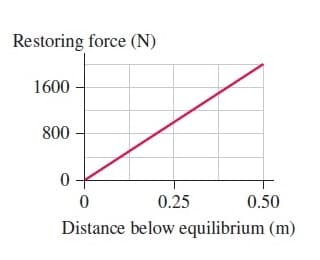Simple harmonic motion
Simple harmonic motion is a type of periodic motion in which an object undergoes oscillatory motion. The restoring force exerted by the object exhibiting SHM is proportional to the displacement from the equilibrium position. The force is directed towards the mean position. We see many examples of SHM around us, common ones are the motion of a pendulum, spring and vibration of strings in musical instruments, and so on.
Simple Pendulum
A simple pendulum comprises a heavy mass (called bob) attached to one end of the weightless and flexible string.
Oscillation
In Physics, oscillation means a repetitive motion that happens in a variation with respect to time. There is usually a central value, where the object would be at rest. Additionally, there are two or more positions between which the repetitive motion takes place. In mathematics, oscillations can also be described as vibrations. The most common examples of oscillation that is seen in daily lives include the alternating current (AC) or the motion of a moving pendulum.
Hi, I am in phyiscs one and they have the problem :When you stand on a trampoline, the surface depresses below equilibrium, and the surface pushes up on you, as the data for a real trampoline in (Figure 1) show. The linear variation of the force as a function of distance means that we can model the restoring force as that of a spring. A 72 kg gymnast jumps on the trampoline. At the lowest point of his motion, he is 0.80 m below equilibrium.
If we assume that all of the energy stored in the trampoline goes into his motion, how high above this lowest point will he rise?
Please break down this problem in a simple way so I can understand for the steps. Thank you!

Trending now
This is a popular solution!
Step by step
Solved in 2 steps with 2 images




